China will continue to loom large in South Asia's growth calculus; remains largest trading partner of India
According to information available from the Embassy of India, Beijing more than 100 Chinese companies have established offices/operations in India. Many large Chinese state-owned companies in the field of machinery and infrastructure construction have won projects in India and have opened project offices in India.
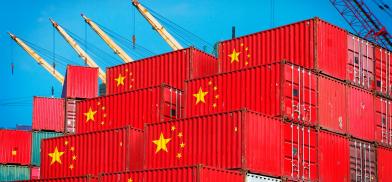
Total energy investment is widely expected to exceed $3 trillion for the first time in 2024, the International Energy Agency stated in its annual World Energy Investment Report. China is set to have the largest share of clean energy investment in 2024 with an estimated $675 billion, with Europe $370 billion and the United States $315 billion. [i]
China’s presence is now felt alike in all parts of the world, both in the Global North and the developing countries of the Global South. As with most other rising powers in the past, China’s growing economic capabilities are pushing it to protect and promote its expanding commercial and strategic interests abroad through a combination of traditional and new instruments. China’s modus operandi abroad reflects much of its domestic principles and experience, including its centralised, single-party-led political and economic models of organisation. The partners with which China collaborates include a variety of both government and private actors, in China and in South Asian countries, who establish regular processes of consultation and cooperation to deepen engagement. In many cases, the Chinese government often plays the role of a matchmaker, facilitating connectivity. The tools of collaboration very often include multiple methods to engage individual or institutional partners and countries, including a multiplicity of channels that are often, but not always, established by governments. [ii]
China’s economic transformation and the consequent expansion of its comprehensive national power are having strategic consequences everywhere, including in South Asia. It turned the relative trade isolation of South Asia to its advantage by making inroads through its aggressive trade and economic policies of international cooperation. As India and the rest of the region turned towards economic liberalisation and globalisation the prospects of regional integration with China brightened. Even as India sought to push South Asian economic cooperation and connectivity, a host of factors severely limited the scale and scope of regional integration. Meanwhile, China’s emergence as a powerful economic force with much larger resources than India created a powerful commercial magnet for the region. [iii]
Upsurge in trade with China
While the strategic geopolitics of China got intertwined with the larger global geopolitics of the US and Europe in matters relating to trade and technology, the South Asian region saw an upsurge in trade and economic cooperation with China.
According to the latest trade data of the Global Trade Research Initiative (GTRI), China has reclaimed its position as India’s top trading partner, surpassing the United States after a two-year gap. In the fiscal year 2024, bilateral trade between India and China reached US$118.4 billion. Imports from China increased by 3.24% to US$101.7 billion, while exports to China surged by 8.7% to US$16.67 billion. On the other hand trade between India and the US experienced a slight setback. In FY24, the total trade volume amounted to US$ 118.3 billion. Indian exports to the US declined by 1.32% to US$ 77.5 billion, and imports from the US dropped by 20% to US$ 40.8 billion. India’s economic relationship with China has been in the limelight due to India’s heavy reliance on Chinese imports in critical sectors such as telecommunications, pharmaceuticals, and advanced technology. The GTRI report highlighted this dependence, by bringing out that India imported US$4.2 billion worth of telecom and smartphone parts from China, accounting for 44% of total imports in this category. Similarly, laptops and PC imports from China totalled US$ 3.8 billion, comprising 77.7% of India’s imports in this sector.
In response, India has implemented various strategies to mitigate this dependency which include introducing production-linked incentive schemes (PLI) to boost domestic manufacturing, imposing anti-dumping duties to protect local industries, and enforcing quality control orders to ensure the safety and quality of imported goods. Additionally, India’s import of lithium-ion batteries for electric vehicles, primarily sourced from China, amounted to US$ 2.2 billion, representing 75% of such imports. This highlights China’s critical role in India’s endeavours towards the electrification of transport. [iv]
With the growth in bilateral trade between India and China in the last few years, many Indian companies have started looking at the Chinese market by setting up Chinese operations to service both their Indian and MNC clientele in China. Indian enterprises operating in China either as representative offices, Wholly Owned Foreign Enterprises (WOFE) or Joint Ventures with Chinese companies have gone in for manufacturing (pharmaceuticals, refractories, laminated tubes, auto-components, wind energy etc.), IT and IT-enabled services (including IT education, software solutions, and specific software products), trading, banking and allied activities. While the Indian trading community is primarily confined to major port cities such as Guangzhou and Shenzhen, they are also present in large numbers in places where the Chinese have set up warehouses and wholesale markets such as Yiwu in Zhejiang.
Most of the Indian companies have a presence in Shanghai, which is China’s financial center; while a few Indian companies have set up offices in the capital city of Beijing. Some of the prominent Indian companies in China include Dr Reddy’s Laboratories, Aurobindo Pharma, Matrix Pharma, NIIT, Bharat Forge, Infosys, TCS, APTECH, Wipro, Mahindra Satyam, Dr Reddy’s, Essel Packaging, Reliance Industries, SUNDARAM Fasteners, Mahindra & Mahindra, TATA Sons, Binani Cements, etc.
According to information available from the Embassy of India, Beijing more than 100 Chinese companies have established offices/operations in India. Many large Chinese state-owned companies in the field of machinery and infrastructure construction have won projects in India and have opened project offices in India. These include Sinosteel, Shougang International, Baoshan Iron & Steel Ltd, Sany Heavy Industry Ltd, Chongqing Lifan Industry Ltd, China Dongfang International, Sino Hydro Corporation, etc. Many Chinese electronic, IT and hardware manufacturing companies are also having operations in India. These include Huawei Technologies, ZTE, TCL, Haier etc. A large number of Chinese companies are involved in EPC projects in the Power Sector. These include Shanghai Electric, Harbin Electric, Dongfang Electric, Shenyang Electric etc. In recent years, Chinese mobile companies have achieved remarkable growth in India, with companies like Xiaomi, Huawei, Vivo and Oppo occupying over 80% of Indian mobile handset market. [v]
Restructuring of supply chains
South Asia’s economic imperatives warrant that it does not allow the strategic geopolitics of global powers to interrupt its trade and economic relations with China so that the region’s growth engine continues to generate jobs.
Growth in South Asia is expected to be strong at 6.0% in 2024, driven mainly by robust growth in India and recoveries in Pakistan and Sri Lanka. But persistent challenges threaten to undermine sustained growth, hindering the region’s ability to create jobs and respond to climate shocks. According to Jobs for Resilience, the latest South Asia Development Update, the region is expected to remain the fastest-growing region in the world for the next two years, with growth projected to be 6.1% in 2025. But this strong outlook is often deceptive. For most countries, growth is still below pre-pandemic levels and is dependent on public spending for sustenance. At the same time, private investment growth has slowed sharply in all South Asian countries and the region is not creating sufficient jobs to keep pace with its rapidly increasing working-age population. In Bangladesh, output is expected to rise by 5.7% in FY24/25, with high inflation and restrictions on trade and foreign exchange constraining economic activity. Bhutan’s economy is expected to grow by 5.7% in FY24/25, supported by higher electricity production alongside growth in mining, manufacturing, and tourism. In India, which accounts for the bulk of the region’s economy, output growth is expected to reach 7.5% in FY23/24 before returning to 6.6% over the medium term, with activity in services and industry expected to remain robust. Output growth in Maldives is expected to be 4.7% in 2024, a half-percentage point downgrade from previous forecasts as tourists shift from high-end resorts toward lower-cost guesthouses. In Nepal, output is expected to grow by 4.6% in FY24/25 as hydropower exports are expected to pick up but recovery outside the hydropower sector is expected to remain slow. Following the contraction in FY22/23, Pakistan’s economy is expected to grow by 2.3% in FY24/25 as business confidence improves. In Sri Lanka, output growth is expected to strengthen to 2.5% in 2025, with modest recoveries in reserves, remittances, and tourism. [vi]
From the last quarter of the 20th century and continuing through the first decade of the 21st century, trade integration helped pull many people out of poverty. This process slowed following the financial crisis of 2009 and with growing protectionism worldwide. A restructuring of supply chains, triggered by the disruption caused by the COVID-19 pandemic and geopolitical tensions, is resulting in some transfer of production from China to South-East Asia and South Asia. At the same time amidst complex geopolitical dynamics, the major trading blocks are continuing to explore greater self-reliance in critical production sectors. These developments, if they continue, could affect the pattern of trade and FDI and lead to continued stagnation in the share of global trade to GDP, with profound effects on the region. Trade in services is, however, still rising, as are cross-border financial transactions While the jury is still out as to whether globalization has reached its peak with countries showing signs of de-globalisation, a weakening of trade integration could jeopardize export-led strategies and restrict opportunities for labour migration, potentially increasing unemployment and weakening social cohesion.[vii]
(The writer is a retired special secretary, Government of India, and a commentator on economic issues. Views are personal. He can be reached at ppmitra56@gmail.com)
Sustainable Switch
Climate Focus Reuters.comJune 7,2024
[ii] Constantino Xavier & Jabin Jacob How China Engages South Asia: Themes, Partners and Tools,https://csep.org/reports/introduction-studying-chinas-themes-partners-and-tools-in-south-asia/May 3.2023
[iii] C Raja Mohan Chan Jia Hao9Editors)Navigating India-China Rivalry: Perspectives from South Asia Institute of South Asian Studies National University of Singapore September 2020 │ SingaporeSOUTH ASIA DISCUSSION PAPERShttps://www.isas.nus.edu.sg/wp-content/uploads/2020/09/SADP-Navigating-India-China-Full-Final.pdf
[iv] China overtakes US as India’s top trading partner in FY24: GTRIhttps://indbiz.gov.in/china-overtakes-us-as-indias-top-trading-partner-in-fy24-gtri/May 13, 2024
[v] Embassy of India ,BeijingTrade and Economic Relationshttps://www.eoibeijing.gov.in/eoibejing_pages/MjQJune 12,2024
[vi] Overview World Bank Group, https://www.worldbank.org/en/region/sar/overviewApr 02, 2024
[vii] 2024 REGIONAL HUMAN DEVELOPMENT REPORT Making Our Future: New Directions for Human Development in Asia and the Pacifichttps://www.undp.org/sites/g/files/zskgke326/files/2023-11/undp_regional_human_development_report_web_final_0.pdfpp34-35




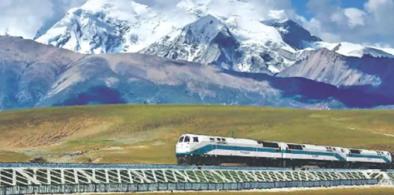
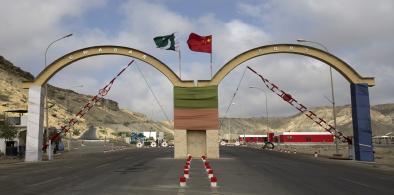
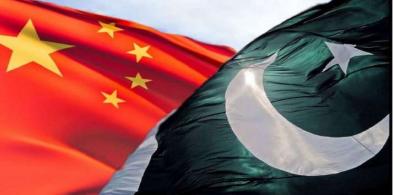

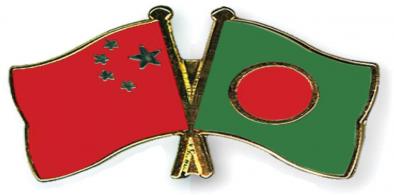











Post a Comment